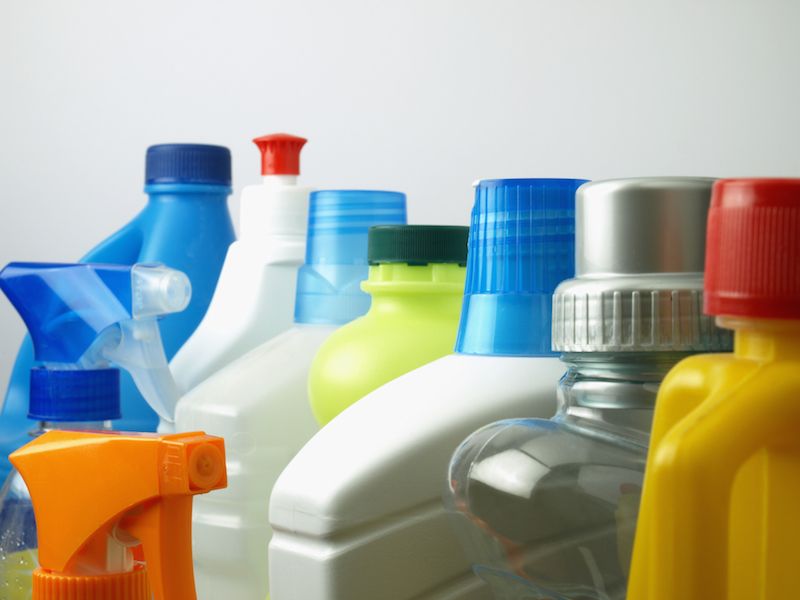Cleaning with Bleach May Lead to Childhood Infections

A splash of bleach can kill germs on a kitchen counter, but it may also cause health problems in children, a new study finds.
Children in the study who lived in homes or went to schools where bleach was used for cleaning had higher rates of influenza, tonsillitis and other infections, compared with kids who weren't exposed to bleach, the researchers found.
The increased risk of infection was modest, but the findings, published online today (April 2) in the journal Occupational & Environmental Medicine, may spur further research into health effects linked to the cleaning agent, the researchers said.
"The high frequency of use of disinfecting cleaning products — caused by erroneous belief, reinforced by advertising, that our homes should be free of microbes — makes the modest effects reported in our study of public health concern," the researchers wrote in the study. [12 Worst Hormone-Disrupting Chemicals & Their Health Effects]
The researchers surveyed parents of more than 9,100 children ages 6 to 12 living in the Netherlands, Finland and Spain.
The parents answered questions about how often in the past year their children had several infections, including the flu, tonsillitis, sinusitis, bronchitis, otitis and pneumonia. Parents also reported whether they had mold in their home, and whether they used bleach to clean at least once a week, the researchers said.
Bleach use was common in Spain, with 72 percent of parents saying they used it, and rare in Finland, where 7 percent of parents used it. Some school officials also answered the questionnaire, showing that all of the Spanish schools were cleaned with bleach, but the Finnish schools were not. In the Netherlands, 57 percent of the parents and 11 percent of the schools reported using bleach.
Sign up for the Live Science daily newsletter now
Get the world’s most fascinating discoveries delivered straight to your inbox.
The children in Spain had a high infection rate, with 35 percent getting one infection during the year, and 26 percent getting more than one infection. The Netherlands also had a high infection rate, with 39 percent getting sick once a year and 21 percent getting sick more than once.
Finland had the lowest rate of infections, with 29 percent of kids getting sick once, and just 14 percent getting more than one infection.
After controlling for factors such as second-hand smoke at home, parents' education and the presence of household mold, the researchers found that the number and frequency of infections were higher among children whose parents cleaned their homes with bleach.
Overall, children whose parents cleaned the house with bleach faced a 20 percent increased risk of flu, a 35 percent increased risk of recurrent tonsillitis, and an 18 percent increased risk of having any recurrent infection, the researchers found.
Earlier studies also suggest that cleaning product use increases wheezing and respiratory infections in babies, and persistent wheezing and airway inflammation in school-age children, the researchers said. But they noted that the new study is observational, meaning that it's unclear whether bleach use, or other unknown factors, led to the children's health problems.
Still, the researchers offered two hypotheses for why bleach might upset children's health. Perhaps compounds in the bleach become volatile or airborne during cleaning, they said. If children breathe in these compounds, it might damage the lining of their lungs, leading to inflammation and making them more susceptible to infection, the researchers suggested.
Or bleach may somehow suppress the immune system, they said.
Follow Laura Geggel on Twitter @LauraGeggel. Follow Live Science @livescience, Facebook & Google+. Original article on Live Science.

Laura is the archaeology and Life's Little Mysteries editor at Live Science. She also reports on general science, including paleontology. Her work has appeared in The New York Times, Scholastic, Popular Science and Spectrum, a site on autism research. She has won multiple awards from the Society of Professional Journalists and the Washington Newspaper Publishers Association for her reporting at a weekly newspaper near Seattle. Laura holds a bachelor's degree in English literature and psychology from Washington University in St. Louis and a master's degree in science writing from NYU.











